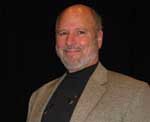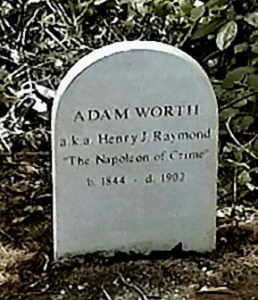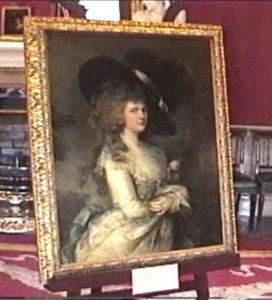He was a nice Yiddish boy. He never smoked or drank. He never physically hurt a soul. He was loyal to those close to him. Some might say the same of Bernie Madoff. — W. Rabinowitz
By Jerry Klinger

LONDON, England — Napoleon Bonaparte is entombed in a fifteen-foot-tall sarcophagus in the Royal Chapel at Les Invalides, Paris. The Napoleon of Crime had been buried, obscurely deep, very deep, in London’s old West Highgate Cemetery, in a mass grave of forgotten paupers.
A cemetery official led me to the impossible-to-find, vegetation-shrouded site. We climbed high up the hill, past well-maintained mausoleums and tombs, past Egyptian Avenue, higher until the burials became unkempt, moss, and lichen covered. An invisible left turn and my guide pointed into the green murkiness interrupted by broken gray stones. “That was where Charles Dickens was buried until Queen Victoria had him disinterred and moved to Westminster Abbey. Victoria left the family he loved here. “

The cemetery official directed me to the mass grave that was now nearly forgotten. I had commissioned a simple head stone to be placed at the site for: Adam Worth, a.k.a., Henry J. Raymond, “The Napoleon of Crime”, b. 1844 – d. 1902.
Critics and cynics, historical obscuritanists, will say why bother with his grave. The answer is simple; the Jewish American Society for Historic Preservation’s motto is “Shaping the future by remembering the past.” At times, the Jewish story can run counter to contemporary “political correctness” considerations.
Back in the main administration office of Highgate Cemetery, I had written up a biography about Adam Worth for the Cemetery’s historical records. The sketch was accepted. It was being entered into the file. The administrator read it. “Adam Worth was Jewish?” He asked chagrined. We buried a Jew up there and did not know it.”
I answered, “yes.”
Adam Worth, or Wirth, or Werth, no one is really sure, was his real name. He used many during his lifetime. Worth was born in Germany, the first child of a poor Orthodox Jewish family. When he was five he family moved to America settling in Cambridge, Massachusetts. His father was a tailor.
Worth was a rebellious child, running away from home when he was barely a teenager. Bouncing from job to job, location to location, when the American Civil War broke out, he enlisted in the 2nd New York Heavy Artillery. Within two months he was promoted to sergeant. Worth was only 17.
A year later he was wounded at the Second Battle of Bull Run. Worth was transferred to Georgetown Hospital in Washington, D.C. where, to his surprise, he learned the Union Army had listed him as killed in action.
An instinctive opportunist, Worth saw a way to swing his official death to profit.
It was a common practice in the Armies of the North and South at the time for the wealthy to buy their way out of serving. Before conscription, for the right sum, a wealthy individual or family that did not want their son to fight, simply “hired” a substitute. A poor man would go to fight. The rich man stayed home. When the supply of men was still insufficient, “bounties” were paid for enlisting. Since Worth was already dead, he reenlisted for a bounty. At the first opportunity, he deserted and reenlisted under a new name, with a new unit, for a new bounty. It was lucrative.
Worth did not come up with the idea of “bounty jumping.” It was a common practice. Many New York City soldiers did not enlist for the idealistic reasons of Union and ending slavery. Later New York anti-war and anti-Black riots proved the case. Bounty jumping and desertion was so serious, the famed Pinkerton Detective Agency was energetically employed. Worth was one of their targets.
As the Pinkertons closed in on Worth, he vanished into the depths of New York City’s criminal underworld.
By the end of the Civil War, Worth had organized his own gang of pickpockets. He was quite good at it, but not good enough. A botched robbery earned him a three-year sentence in Sing Sing Prison. Worth escaped quickly.
It was obvious that Worth, though very good as a criminal organizer, and leader, needed advanced training to be truly successful at his chosen craft. He was still young, only 22.
Fredericka “Marm” Mandelbaum was a 250-pound Orthodox synagogue-going matron of New York High Society. Her dinner parties included a virtual who-is-who of New York City’s legitimate and criminal upper crust. The Jewish, motherly, matron ran a series of criminal gangs involved in blackmail, confidence rackets, fencing and most significantly, a school for pickpockets. “Marm” Mandelbaum knew her lucre flowed best when she had a constant supply of eager students who were beholden to her. A profitable criminal needed training.
Worth became one her best protégés, along with people like Sally Lyons, a nice Jewish girl who also did well in the business.
Mandelbaum’s skill and stealth as a criminal kept her out of jail. She never participated directly in any of the criminal activity she promoted. Her luck changed in 1884 when an energetic young, reformist District Attorney, Peter Olney, was appointed by, Governor, later President of the United States, Grover Cleveland. Olney’s agents infiltrated Mandelbaum’s fencing operations.
Mandelbaum, then 66 years old, was arrested. Released on bail, she skipped town and settled in Hamilton, Ontario, Canada, with a $1 million retirement nest egg. She joined the local Orthodox synagogue and spent her declining years, doing “good deeds,” generously donating to Jewish tzedakah causes until her death in 1896.
Worth learned quickly under Mandelbaum. He, with her sage advice and guidance, expanded from store robberies to bank robberies. Barely 25, Worth began planning his own heists. He had a partner in crime, Charley Bullard, a Mandelbaum-respected safe cracker whom Worth sprung from White Plains jail by a secretly dug tunnel.
Together, Worth and Bullard during November, 1869, audaciously robbed the biggest bank in Boston, the Boylston National Bank. They used the same tunneling technique that freed Charley earlier.
The bank did not take the loss of prestige, reputation, and money lightly. It hired the Pinkerton Agency to find the culprits. The Pinkertons were closing in on Worth and Bullard. The two hastily decided that a long European vacation of indefinite duration, with their loot, would be appropriate.
Bullard and Worth arrived in Liverpool with assumed identities. Bullard became a Texas Oilman named Wells. Worth became a wealthy financier, a true charlatan’s charlatan. Worth became Henry Judson Raymond of New York. The name Worth picked was a stroke of genius and opportunistic misdirection. Henry Jarvis Raymond was a founder of the New York Times. Henry Jarvis Raymond had died June 18. The closeness of the names with just a sliver of separation was the perfect foil for deception. Worth used the cover for years to insinuate himself into European and especially British aristocratic society. He used his name to suggest to the bluebloods that his American heritage was high end.
The amazing thing was that British society bought into the deception since Worth, now Raymond, used his money to buy the trinkets of wealth they associated with power and high class inherited life – estates, clothing, parties, horses and even a yacht.
Worth, accepted as an American cousin of means, moved easily in British society. He knew their comings and goings. He knew when they were traveling to the continent to take the waters. He knew when the best opportunities would be available to rob the British aristocracy down to their socks. And he did.
The stolen wealth, fenced, led to more theft. A key requirement of Worth’s gang and criminal activity was that no one, period, was ever to be physically injured in a heist. They never were.
Worth, rather Raymond, purchased one of the great London Houses in 1875. Western Lodge, in Clapham was a very prestigious residence. Ironically, in 1925, the house was donated to a charity, The Society for the Relief of the Homeless Poor. The irony was that Worth for much of his later life was himself both homeless and poor. He had no wealth other than what he could steal and he had no home other than the charade he had to maintain.

In 1876, Worth reached the pinnacle of his life as a master thief. Sally Lyons, in her autobiography, Why Crime Does Not Pay, (she had reformed in later life) wrote that Worth stole the famed Gainsborough Painting of Georgiana, the Duchess of Devonshire. She said he stole it to use as leverage to once again spring Bullard from the pokey.
Perhaps that was true initially. Bullard was sprung by a legal maneuver and left England for the States. The extremely well-known and famous painting that Worth stole, suddenly become a liability. He couldn’t fence it. It was too hot. Or maybe something else occurred.
The Duchess of Devonshire, Georgiana Spencer, 1757-1806, was the great-great-great-great-aunt of Diana, Princess of Wales. Georgiana, forever captured by the British artistic skills of Thomas Gainsborough, symbolized sybaritic sexual reality and fantasy to tight-laced Victorian England.
The Duchess had married the fifth Duke of Devonshire, William Cavendish. It was a loveless, lonely union.
Georgiana invited a friend of hers, Lady Elizabeth Foster, who had become destitute when she separated from her husband, to come and live with her. In an arrangement that today is commonly called a Ménage a Trois, Georgiana, Elizabeth, and William enjoyed their lives together at the high end of British aristocratic society, while hiding their “libertine” private lifestyle.
Georgiana’s visage in the Gainsborough painting titillated the sexual imagination of all in Victorian society who gazed upon the beauty.
If Worth stole the painting for leverage and money, he kept her very close for the next 25 years. A secret compartment was built under his bed for the painting to repose while he rested above. He took the painting with him when he traveled in a secret, double-bottomed steamer trunk. Georgiana never left his side no matter how low his personal fortunes sank, and they eventually did.
In Liege, Belgium in 1892, Worth planned a robbery of a money delivery wagon. He used two new accomplices, who were relatively unknown to him. One was an American, Johnny Curtin. The robbery went bad. Worth was captured, the accomplices escaped.
During his trial, Worth refused to give up the names of his accomplices. He was sentenced to seven years in prison. Johnny Curtin later seduced, robbed and abandoned Worth’s wife while Worth was in prison. She went insane and was committed to an asylum. His children were sent to the States in care of his brother.
Worth was released on good behavior from the Belgian prison at Leuven in 1897. He was penniless but he still had the Duchess of Devonshire painting that had never been discovered. Returning to England, he robbed a diamond merchant. He took the funds and went to the States.
It was in the States that the saga of the Duchess and Adam Worth changed course. Worth opened negotiations with the Pinkerton Agency that for a fee of $25,000 and a get-out-of-jail free card, he would help them recover the painting. An agreement was reached in 1901.
Worth and his children returned to London. Worth died in London in 1902. His children made his final arrangements. Worth was buried as a pauper in an unmarked mass grave in Highgate Cemetery. The children returned to the States, presumably with the balance of the ransom money from the return of the Duchess. In a final irony, Worth’s son went on to have a career as a Pinkerton detective.
The Duchess of Devonshire painting was put up for sale. It was eagerly purchased by J. Pierpont Morgan, the rotund American financier. It remained in the Morgan family until 1994, when the 11th Duke of Devonshire purchased it. Two hundred years after the saga of the Duchess of Devonshire’s painting played out, it was returned to the ancestral estate, Chatsworth House. The painting is on display and is easily accessible.
My wife and I went to Chatsworth House to see the Duchess. She was truly a beautiful woman.
Adam Worth’s story took one final immortalizing turn. Scotland Yard’s Robert Anderson, who was working to unmask Henry Judson Raymond, gave him his moniker, the Napoleon of Crime. Sir Arthur Conan Doyle, the famed author of the Sherlock Holmes mysteries, is believed to have based his criminal genius character, Dr. Moriarty, upon Adam Worth. Sherlock Holmes and Dr. Moriarty have moved deep into print, movies and television.
In a sense, Adam Worth, never as evil and sinister as popular culture has portrayed Dr. Moriarty, lives today.
*
Klinger is the president of the Jewish American Society for Historic Preservation
www.JASHP.org